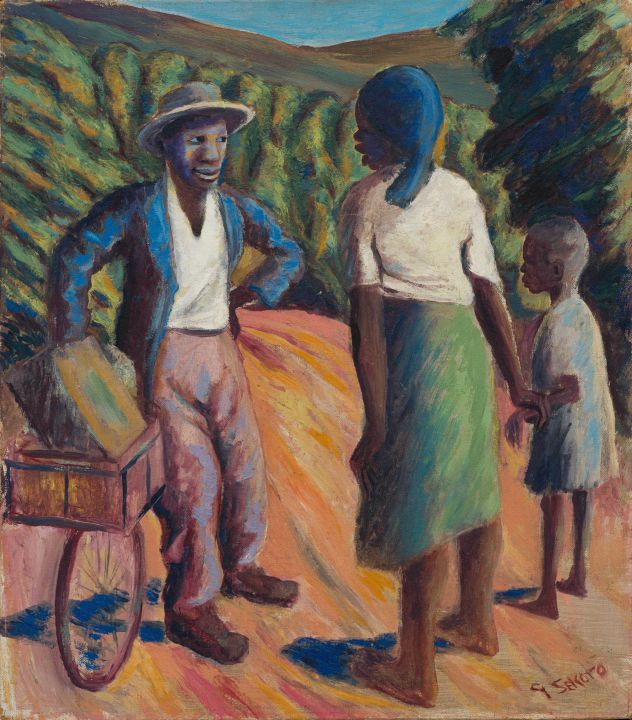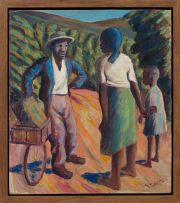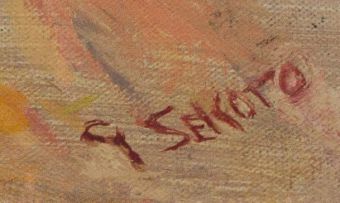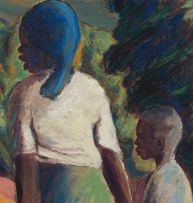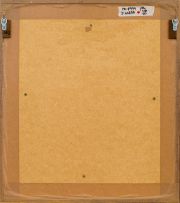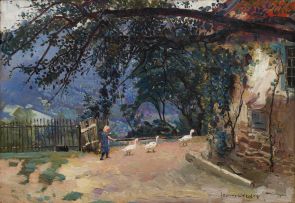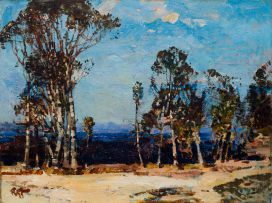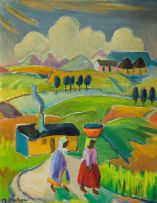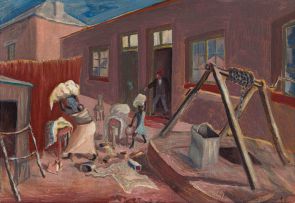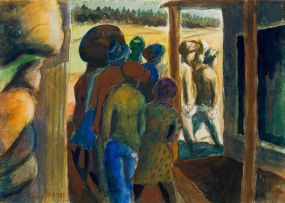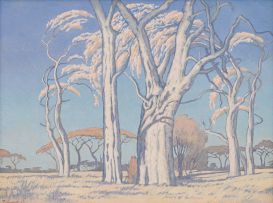The Visitor, Eastwood
Gerard Sekoto
Incl. Buyer's Premium & VAT
About this Item
signed
Notes
Not only did Gerard Sekoto never pass up any opportunity to speak out against racism,1 but he also used every opportunity to depict the plight of its victims. As Mary-Jane Darroll writes: 'In his personal writings Sekoto clearly challenges his socio-political entrapment and that of his neighbours and fellow citizens. His artworks arose out of a consciousness, strongly sensitised by the oppressive nature of everyday life for 'non-white' South Africans. Through the depiction of domestic scenes, his work shows up the injustices of their time. Sekoto's detailed depictions of life, family and society in Sophiatown, Johannesburg 1938-42, District Six, Cape Town 1942-45, and Eastwood, Pretoria 1945-47, provide viewers with a valuable historical commentary on the prevalent social mores of the day.'2
The social, rather than the aesthetic factors were more important to Sekoto when he painted these scenes.3 An engaging social interaction is evident in the present lot, The Visitor, Eastwood: a local woman stands in the middle of the road, in conversation with a visiting cyclist, a scene pitted against the landscape beyond it. Sekoto flouts the conventional figures-in-a-landscape composition characteristic of such artists as Maggie Laubser by foregrounding the group, and arranging the figures in an interesting manner. In most of the works of this period, Sekoto captures people in mid-sentence, actively conversing with one another.
The landscape acts as compositional and thematic backdrop in his work, lending itself to dramatising the effects of social, economic and political realities of the time. It configures interesting power relationships between the people depicted in the scenes. Says Sekoto, 'What I wanted to catch was the life of the people and their expressions'.4 The power in the present lot is clearly with the woman: she is talking to the visitor, possibly a stranger, and holding the child defensively by the arm. Is she just on the point of leaving, and about to hurry the child on? The narrative complexity of the scenes is subtly enhanced.
The formal innovation in his work and the depth of his thematic concerns, make Sekoto the true father of African modernism.
1. In Barbara Lindop (2013) Song for Sekoto: Gerard Sekoto: 1913-2013, Johannesburg: The Gerard Sekoto Foundation, page 20.
2. Ibid, page 22.
3. Mzuzile Mdudzi Xakaza, ibid, page 91.
4. Ibid, page 91.
Exhibited
Wits Art Museum, Johannesburg, Song for Sekoto, retrospective exhibition to celebrate the centenary of the artist's birth, 26 April to 2 June 2013.
Literature
Gerard Sekoto Foundation (2013) Song for Sekoto: Gerard Sekoto 1913-2013, exhibition catalogue, Johannesburg: The Gerard Sekoto Foundation, illustrated in colour on page 102.
